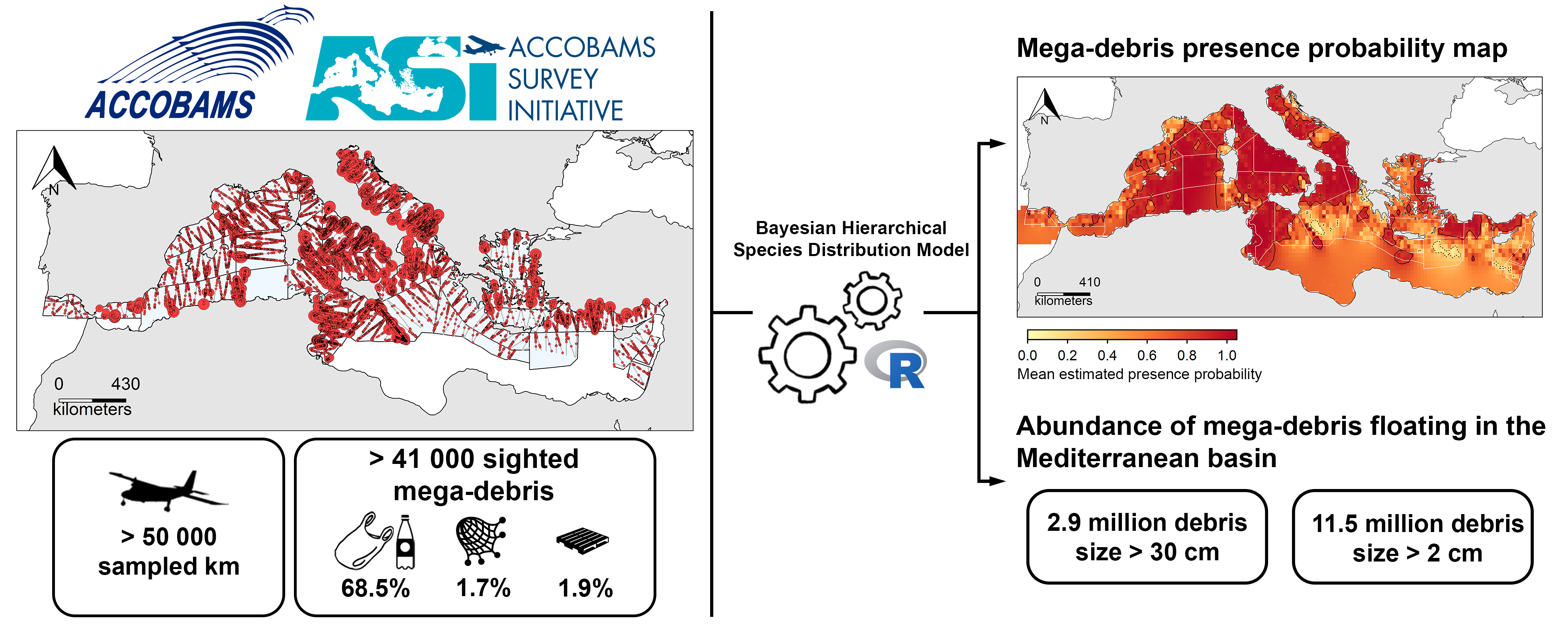Basin-scale quantification and mapping of floating marine debris in the Mediterranean
Dates: Nov 2018–Apr 2019
Research team: Observatoire Pelagis UMR 3462 La Rochelle Université – CNRS.
Collaborators: Dr Matthieu Authier, Prof Vincent Ridoux, Dr Jérôme Spitz.
This work was part of the ACCOBAMS Survey Initiative (ASI). It was published in Environmental Pollution, and presented in the ASI report.
Plastic pollution has become one of the biggest environmental concerns of the Anthropocene as it represents a major threat to both wildlife and human health. Garbage patches in the world’s oceans are well documented, but quantitative assessments of floating debris are still lacking in some major areas. The Mediterranean Sea is one such area, despite being one of the most plastic polluted environments. We used data from the first international basin-scale survey of the Mediterranean Sea to provide the first abundance estimate of floating mega-debris (> 30 cm) and map their distribution over the entire Mediterranean Sea. We estimated the total number of floating mega-debris at 2.9 million items, taking into account imperfect detection. Items larger than 30 cm represent only one fourth of the complete load of anthropogenic debris (> 2 cm) in the Mediterranean, which scales up the estimate to 11.5 million floating debris. The highest densities were observed in the central Mediterranean, and the lowest in the eastern basin. This acute marine pollution might threaten to disrupt entire ecosystems through its impact on marine fauna (entanglement, ingestion, contamination), eventually impacting the tourism industry and the well-being of Mediterranean populations. 
